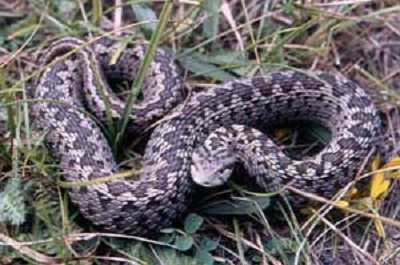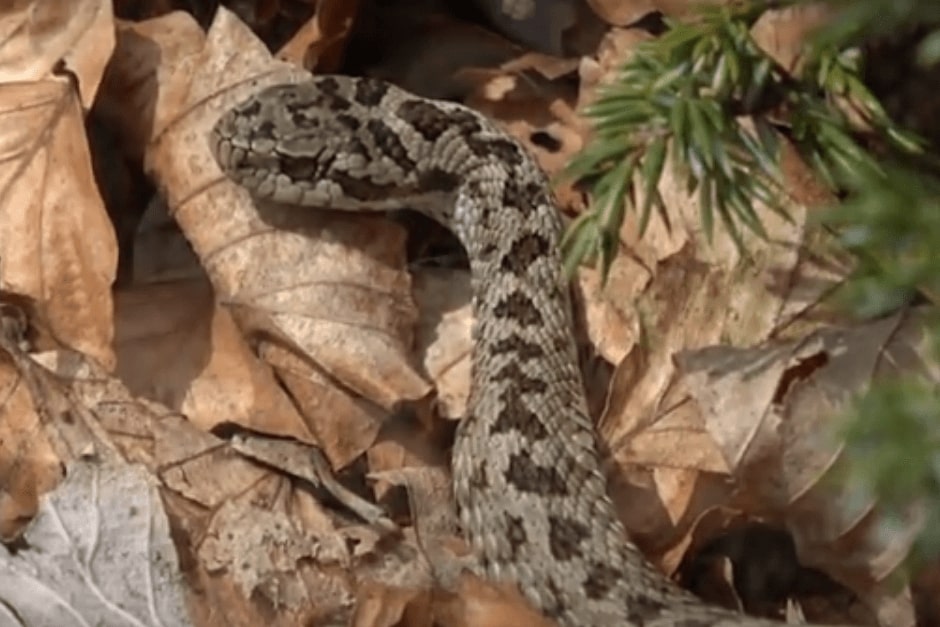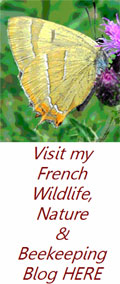Meadow Viper
(Orsini's viper)
Vipera ursinii
Vipère d'Orsini
This small viper has a maximum length of 50cm
the colouration is grey, brown or olive green with a very boldly marked black zig zag pattern on the back which is completely joined up and solid. It has a rounded nose and eyes with vertically slit pupils.
It is found at altitudes of 900 to 2200 metres. In France it is only in Provence-Alpes-Côte d’Azur. It is extremely rare and in danger of extinction in the only three EU countries where it is present, France, Italy and Greece with IUCN red listing. It prefers open rocky habitats with some shrubby growth and sparse grasslands/pasture, very sensitive to disturbance and human activity. Most studies conclude that it is not aggressive and rarely bites humans, 9 times out of 10 if it does “strike” it keeps its mouth closed. When approached by humans it chooses either to remain completely still or flee slowly and silently.
Reproduction has been difficult to study in the wild
The following sites in France have been given Natura2000 status for this species.
| FR9301530(2) | 04 | CHEVAL BLANC - MONTAGNE DES BOULES - BARRE DES DOURBES(2) | ||
| FR9301535(2) | 04 | MONTAGNE DE VAL - HAUT - CLUES DE BARLES - CLUES DE VERDACHES(2) | ||
| FR9301537 | 04 | MONTAGNE DE LURE | ||
| FR9301540(2) | 04 | GORGES DE TREVANS - MONTDENIER - MOURRE DE CHANIER(2) | ||
| FR9301545 | 04 | VENTEROL - PIEGUT - GRAND VALLON | ||
| FR9301547(2) | 04 | GRAND COYER(2) | ||
| FR9301570(2) | 06 | PREALPES DE GRASSE(2) | ||
| FR9301580 | 84 | MONT VENTOUX |
With a Population in steep decline and classed as endangered
it would appear that the principle problem for this snake are Human activities, roads, ski runs, tourism and theft by reptile dealers and collectors. It is also eaten by Short toed Eagles, Buzzards, Montagu’s Harriers and Ravens.
All French snakes are fully protected species




